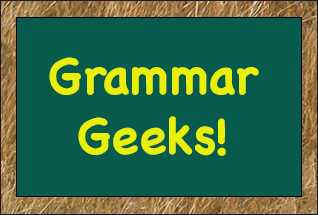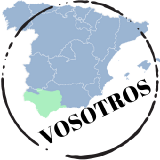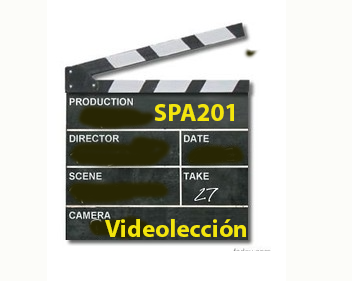2.4: Sección 1 El subjuntivo
- Page ID
- 97538
What is the subjunctive?
You have already learned a good deal about the concept of "tense" in Spanish. Tense provides information about when something happened: in the past, in the present, or in the future. You've already learned to conjugate verbs on the present, preterit, imperfect, present progressive, etc. Spanish has also three moods: the indicative, the subjunctive, and the imperative. Mood indicates the attitude of the speaker towards what is being said. Is it factual, hypothetical, an event that occurred or might occur? The indicative is used to state facts or objective comments. The subjunctive is used to express desires, doubts, a lack of information, reactions, feelings, the improbable - in other words, you will use it to talk about very subjective elements.
| INDICATIVE | SUBJUNCTIVE |
|
Alicia, Felipe, y Carmen planean un viaje a Ecuador. |
Alicia quiere que viajen primero a la capital, Quito. |
|
Les encanta pasar tiempo en la costa. |
Felipe recomienda que visiten el centro histórico. |
|
También piensan ir a las islas Galápagos. |
Carmen sugiere que hagan sus reservaciones ahora mismo. |
The statements in the indicative are declarative sentences, while the sentences in the subjunctive all have an element of uncertainty; the outcome is unknown. Think of it this way, imagine that there are two windows in a room. The one has clear glass, and you can readily see what is happening outside. The other class is fogged up, and you cannot see clearly what is on the other side; you can guess what there might be but never be entirely sure. The indicative and the subjunctive can be thought of in the same way: clear glass= indicative, foggy class - subjunctive. If you want to learn more about the subjunctive mood, click on the Grammar Geek icon below.
Forming the Subjunctive
To form the subjunctive, start with the first person form of the verb in the indicative.
Hablar ---> Hablo --> Hable
Comer ---> Como ---> Coma
Escribir ---> Escribo ---> Escriba
You will invert the endings of the verbs that end in "-ar", "-er" and "ir". Verbs in "-ar" will take the endings of "-er" and "-ir" verbs and vice-versa. Also note that the subjunctive appears in the clause that starts with "que". Below are the complete conjugations, and you can click on the image to go to a video.
Conjugation notes for "vos" and "vosotros" can be found by clicking the respective icons:
|
Recomienda que + |
Pronombre de sujeto |
El verbo "hablar" conjugado |
|---|---|---|
|
yo |
hable |
|
|
tú |
hables |
|
|
él, ella, Ud. |
hable |
|
|
nosotros, nosotras |
hablemos |
|
|
ellos, ellas, Uds. |
hablen |
|
Sugiere que + |
Pronombre de sujeto |
El verbo "comer" conjugado |
|---|---|---|
|
yo |
coma |
|
|
tú |
comas |
|
|
él, ella, Ud. |
coma |
|
|
nosotros, nosotras |
comamos |
|
|
ellos, ellas, Uds. |
coman |
|
Quiere que + |
Pronombre de sujeto |
El verbo "escribir" conjugado |
|---|---|---|
|
yo |
escriba |
|
|
tú |
escribas |
|
|
él, ella, Ud. |
escriba |
|
|
nosotros, nosotras |
escribamos |
|
|
ellos, ellas, Uds. |
escriban |
|
El verbo en infinitivo |
El presente del indicativo |
El radical (la raíz) |
El presente del subjuntivo |
|---|---|---|---|
|
conducir |
conduzco |
conduzc- |
conduzca |
|
conocer |
conozco |
conozc- |
conozca |
|
hacer |
hago |
hag- |
haga |
|
ofrecer |
ofrezco |
ofrezc- |
ofrezca |
|
oír |
oigo |
oig- |
oiga |
|
poder |
puedo |
pued- |
pueda |
|
poner |
pongo |
pong- |
ponga |
|
tener |
tengo |
teng- |
tenga |
|
traer |
traigo |
traig- |
traiga |
|
venir |
vengo |
veng- |
venga |
|
vestir |
visto |
vist- |
vista |
Verbs with spelling changes
Verbs ending in -gar, -car, and -zar will also have a spelling change in the subjunctive, but you have already seen these changes when you studied the preterit or verbs with these particular endings.
| llegar | buscar | comenzar | |
| yo | llegue | busque | comience |
| tú | llegues | busques | comiences |
| él, ella, Ud. | llegue | busque | comience |
| nosotros/as | lleguemos | busquemos | comencemos |
| ellos, ellas, Uds. | lleguen | busquen | comiencen |
VideoLección: Verbos en -gar, -zar, y -car
Actividad 1
Escribe otros verbos del tipo -gar, -zar, y -cer en la tabla
| Verbo | Yo | Nosotros | Ustedes |
| Ejemplo: modificar | modifique | modifiquemos | modifiquen |
There are some irregular verbs in the subjunctive, which are listed below. Note that while the endings follow the same pattern as above, the root is not the first-person singular (yo).
|
El verbo en infinitivo |
yo |
tú |
él, ella, Ud. |
nosotros, nosotras |
ellos, ellas, Uds. |
|---|---|---|---|---|---|
|
dar |
dé |
des |
dé |
demos |
den |
|
estar |
esté |
estés |
esté |
estemos |
estén |
|
haber |
haya |
hayas |
haya |
hayamos |
hayan |
|
ir |
vaya |
vayas |
vaya |
vayamos |
vayan |
|
saber |
sepa |
sepas |
sepa |
sepamos |
sepan |
|
ser |
sea |
seas |
sea |
seamos |
sean |
¡Ahora a practicar!
Actividad 2
Gracias al activismo de sus estudiantes, muchas universidades ahora hacen mucho para practicar y fomentar la sostenibilidad de sus campuses. Aquí hay una lista de sugerencias para los estudiantes. Cambia el infinitivo al subjuntivo siguiendo el modelo.
Andar más
Montar en bicicleta
Apagar las luces
Separar la basura
Desconectar los aparatos
Ahorrar agua
Usar electrodomésticos eficientes
Evitar los desperdicios alimentarios
Consumir productos locales y de temporada
Reducir el consumo; comprar menos ropa
Seguir las 3 "R": reclicar, reusar,
Utilizar bombillas LED
Moderar el uso del aire condicionado y la calefacción
Aprovechar la luz natural
Usar una botella de agua reusable
Plantar árboles
Modelo: Recomiendan que andemos más.
- Answer
-
Recomiendan que....
Montemos en bicicleta
Apaguemos las luces
Separemos la basura
Desconectemos los aparatos
Ahorremos agua
Usemos electrodomésticos eficientes
Evitemos los desperdicios alimentarios
Consumamos productos locales y de temporada
Reduzcamos el consumo; comprar menos ropa
Sigamos las 3 "R"
Utilicemos bombillas LED
Moderemos el uso del aire condicionado y la calefacción
Aprovechemos la luz natural
Plantemos árboles
Actividad 3
En grupos a ver si pueden pensar en más actividades que pueden hacer para salvar el planeta. Pueden seguir el modelo.
Modelo: Quiero que ....
- Answer
-
Varias respuestas en el subjuntivo
Para practicar más
Knowing the forms of the subjunctive well will make using the subjunctive much easier. Below are additional exercises from where you can practice.






